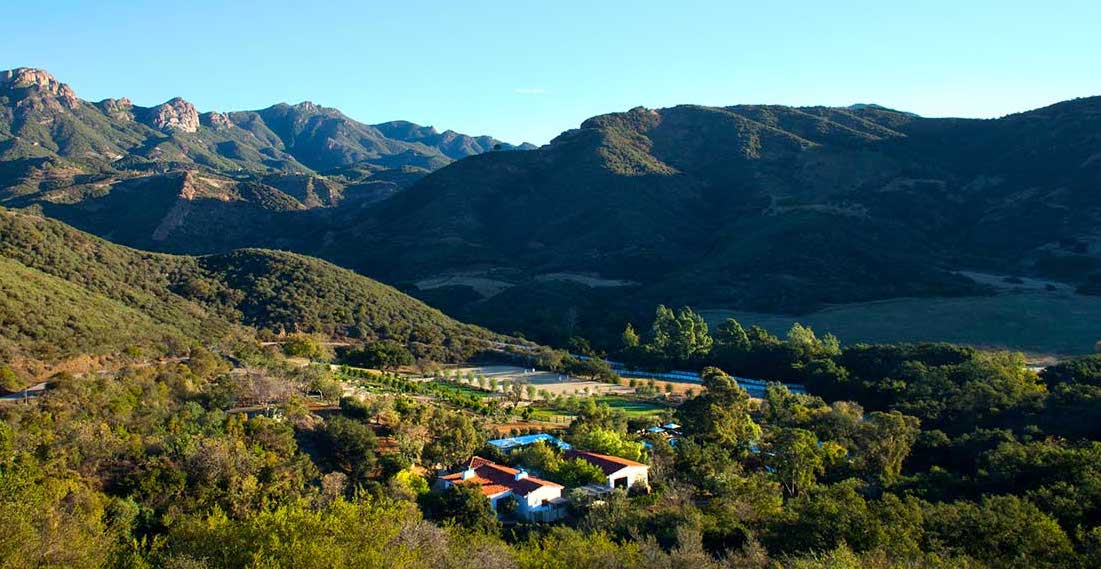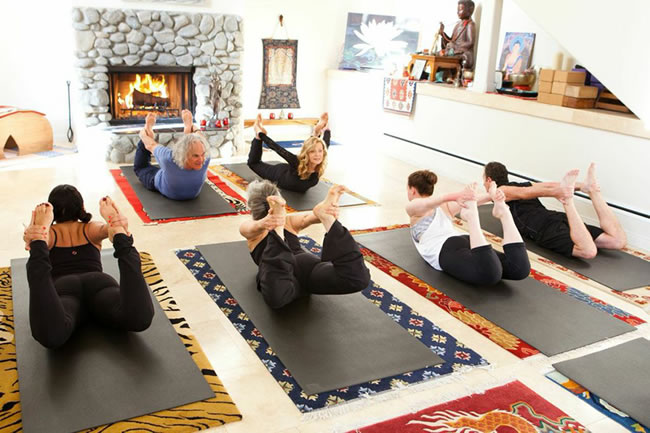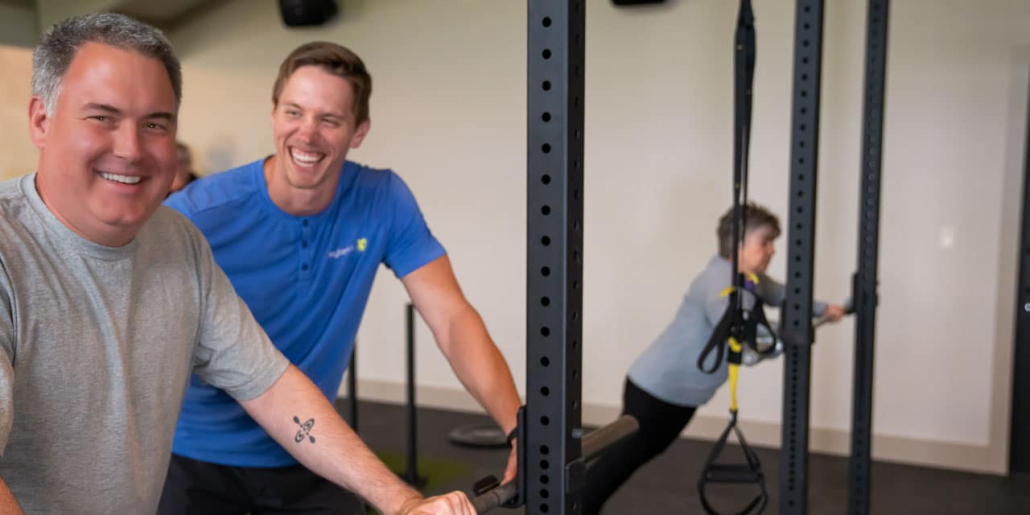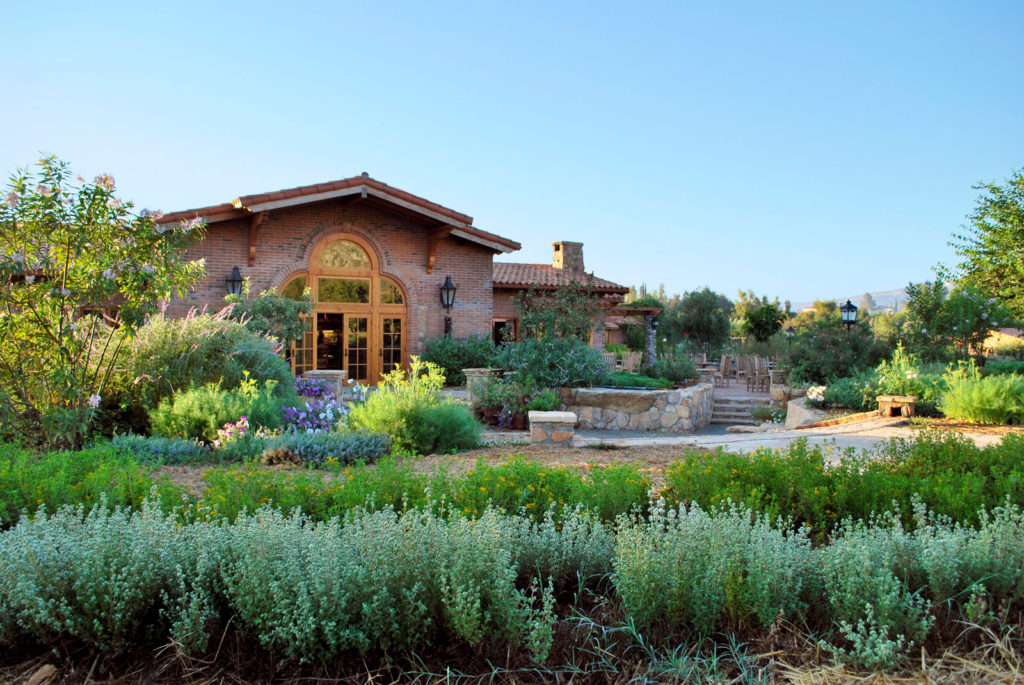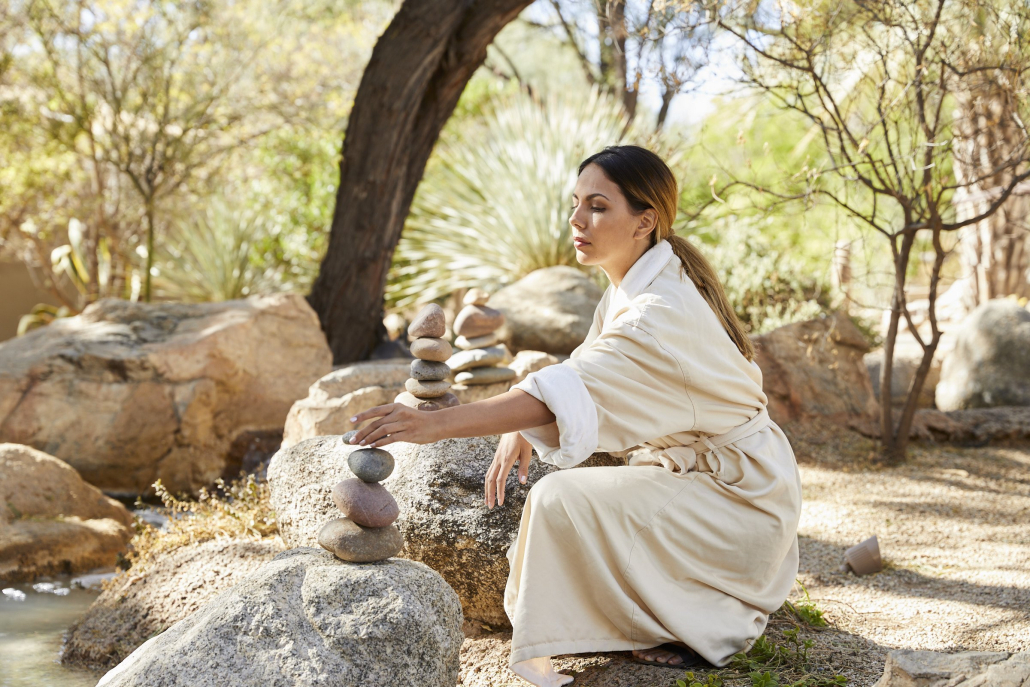Cookbook: Volume One
Balanced Health Coaching
Whether a professional athlete, career professional, or a professional mom, we all need coaching to be our best.
While at our retreat in British Columbia, our caring staff and remote location make it easy to immerse into a genuine health transformation. However, back home, without accountability, it’s easy to fall out of a healthy routine.
Mountain Trek is now offering Balanced Health coaching with program director, Kirk. If you are struggling to maintain your health back home or feel like you need a partner to work through things and hold you accountable, sign up for your first session to see if Balanced Health coaching is right for you. Use the link below to schedule your first session with Kirk.
Why the Mountain Trek Balanced Health program?
The Mountain Trek program has been designed, delivered, and evolved over the past two decades to help guests reclaim their fitness and health. We carefully and intentionally share and implement science-based methods that raise your metabolism, balance key hormones, reduce cellular inflammation, and modulate your endocrine and nervous systems. The result is lasting, genuine health improvements.
About your coach, Kirk:
Mountain Trek’s Program Director
Certified Life Coach
Certified Somatic Relational Therapist
Special Needs Teaching Certification
Youth at Risk Counselor
Yoga Teaching Certification
Meditator for over 40 years
Degree in Anthropology
What Balanced Health Accomplishes:
Changes body composition (increase muscle, lose weight/fat)
Lowers stress levels (cortisol hormone)
Improves sleep quality
Increases and sustains energy levels by balancing key hormones
Detoxifies your body by accelerating eliminatory systems
Improves metabolic rate and gut microbiome health
Strengthens mental health by reducing anxiety and self criticism through mindfulness education and training.
Elevated human growth hormone levels (youth hormones), weight loss, increased creativity, improved skin health, deeper sleep and toxin elimination.
Schedule Your First Session
Use the button below to schedule your first session
Contact us to learn more about the Mountain Trek program
Thousands of guests have realized the benefits of giving their body and mind a break from their day-to-day lifestyle. And they’ve also found their own choices within the program to participate at the level and intensity that supports their unique goals. Please phone us 1.800.661.5161 or contact us below to see if the Mountain Trek program is right for you.
Health Spa Guide
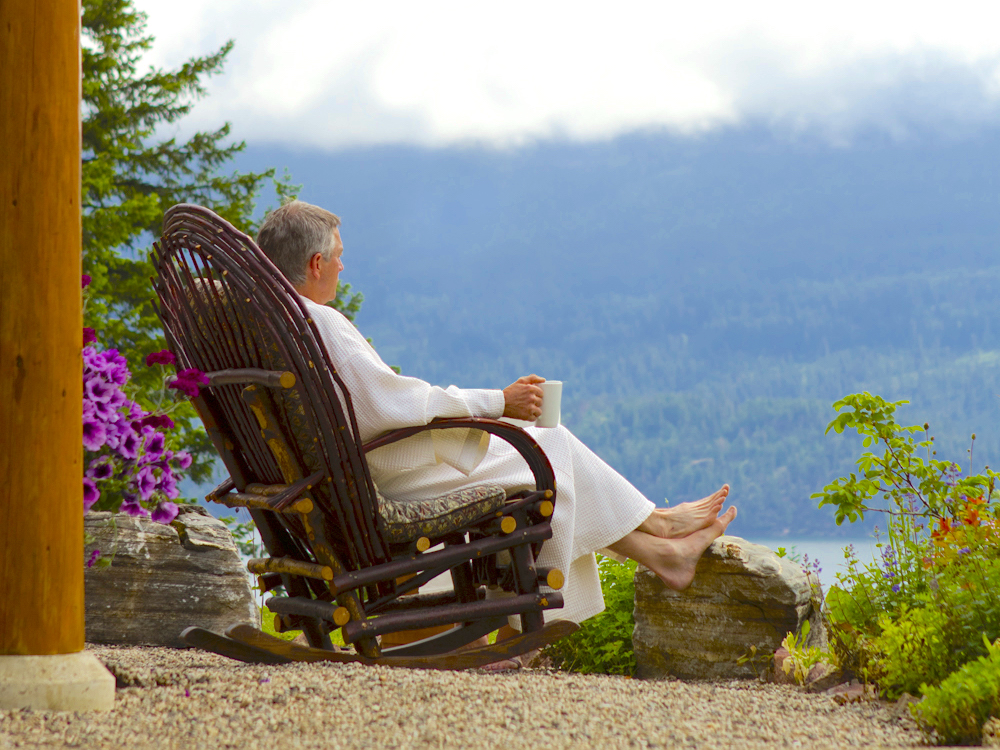
Time spent in a health spa can truly change your life, but only if what you book is in fact the experience you’re seeking. It’s easy to feel overwhelmed when bombarded by choices and multitudes of information online, so we’re here to help break it down for you. After all, it’s important to know all the facts when it comes to making choices for you and your body.
If you’ve heard the term “health spa” in the past and felt a twinge of curiosity flicker deep down somewhere, you’ve come to the right place. This article—a guide rather—will help you fully understand what a health spa is (and how they differ from a “day spa”), the benefits you can expect from attending one, how to find the right one for you, and offer you a list of the best health spas in the world right now.
What is a Health Spa?
If you were to look in either the Merriam-Webster or Cambridge dictionary, you’d see definitions that date back to the 60’s, when the term first appeared. However, a lot has changed in the last 60+ years. Today, as the entire “wellness tourism” market explodes, and hundreds of niche variations surface, from yoga retreat to fasting retreat, an update of the term is needed.
A health spa is a multi-day destination retreat or resort that focuses on providing guests a complete and balanced rejuvenation of body and mind, often layering physical fitness activities (like hiking, yoga, and exercise), eating clean food, detoxification and stress reduction practices, spiritual inspiration, and even sleep support and educational seminars, on top of a traditional spa experience (steam room, sauna, jacuzzi, cold plunge, and massage/treatment rooms).
Health spas are typically located in an inspiring and remote setting to allow natural beauty and tranquility to aid in healing the whole being, are only attended by a small number of guests at a time, and usually have a well-rounded staff of caring, nurturing, professionals to assist guests in meeting their individual health goals.
What is a Day Spa?
Day spas are the most commonly confused with health spas. Day spas are just that: a place you go for the day to relax in spa amenities like a steam room, sauna, or jacuzzi, and/or receive spa treatments such as massages, facials, waxing, and nails. Generally speaking, you pay an entrance fee to access the facilities and then buy treatments a la carte. No fitness or nutrition aspects involved, and the service is over when you leave the building—overnight accommodations are typically not available nor included. Fantastic if you are looking for an outing with your friends or a little “me” time, not so great if you are looking for a major health reset or lasting lifestyle changes.
The History of Spas
The idea of a health spa is by no means new; rather, health practices such as detoxification, healing and deep relaxation have been around in some shape or form for almost as long as we homo sapiens have walked the earth.
It’s long been known that water is essential to our health and wellbeing. Many of the first settlements around the world were built near seas and rivers, and not just for agricultural reasons either. Water was believed to have healing properties and was considered to be a gift from the gods. Hindus would plunge themselves into the sacral Ganges River to heal their body and soul, while ancient Egyptians used the waters of the Nile for beauty procedures. In Buddhist Japan it was believed that bathing was a way to ward off disease and bring good fortune
And while most ancient cultures valued water in all its forms, there were a couple of them who recognized the added benefits of hot water. Specifically, natural hot springs. The ancient Greeks with their baths, and Japanese, with their onsens, were well-aware of the healing properties of hot springs heated by geothermal heat from the earth’s interior. Greek philosopher Hippocrates hypothesized that all human diseases begin with an imbalance of “bodily fluids” and that to restore balance, changes needed to be made to your habits and environment. He also suggested that bathing, massages, walking, and perspiration were crucial to restoring balance in your body. Hippocrates knew intuitively what so many of us are just discovering now; that hormone (“bodily fluid”) imbalance wreaks havoc on our health, that movement induces circulation and sweating, both of which detoxify the body naturally, and that human touch is not only a core need, but also helps move lactic acid and other fluids out of our muscles and through our detox organs (kidneys and liver).
The water in hot springs essentially acts like a multivitamin for your skin. Heated water can hold more dissolved solids than cold water (picture dumping table salt into a glass of cold water versus hot water), so the water is packed with good-for-you elements such as calcium, magnesium, silica, lithium, and radium. These elements found in the water of natural hot springs (in addition to the high temperature of the water) have been found to help with everything from soothing aching muscles to softening your skin, to clearing nasal congestion and improving circulation.
Even without natural hot spring water, and well before knowing the science behind it, cultures all over the world understood the importance of heating our bodies, especially in the colder flu season months to induce a “false fever” when they were more sedentary, inflamed, and susceptible to illness. Turkish Hammams, Russian Banyans, Finnish Saunas, and Native American Sweat Lodges have all been around for millenia, and an integral part of each culture’s ancient healing practices.
While many ancient cultures understood the value of hot water, it is the Romans who deserve the credit for developing what we now know as a health spa. Romans considered regular bathing to be part of their regimen for good health, so it wasn’t long before private and public spas were built all throughout Rome and their conquered lands. They were a place for socialization as well as healing. The word SPA comes from the Roman “sanus per aquam”, which means “health by water”. And these new thermal centers not only had areas for bathing but also gardens, libraries, shops, and medical facilities.
Unfortunately, spas took a decline during the Middle Ages with the fall of the Roman Empire, but they underwent a small resurgence during the Renaissance. This time, however, they were targeted more as treatment centers for specific medical conditions, not as places of relaxation or socialization, and were primarily used by the aristocracy, as only they could afford what was then a lavish luxury.
During the Industrial Revolution, as pollution rose in Europe and North America, spas began to see a rise once again. The need to leave the city for the clean air and waters of the mountains and seaside changed health spas, who began adding “combined treatments” to their offerings. These treatments often included things such as physical exercises, massages, herbal baths, time in nature, and specialized diets. The spas, while evolving, never lost their original purpose of restoring wellness and healing the body, mind, and soul.
By the late 19th and early 20th centuries, health spas had become a staple in the lives of the wealthy and elite. Hotels, restaurants, and entertainment venues started popping up around spas, making the surrounding areas popular getaways for those who couldn’t afford the spa itself, and the culture strengthened. WWII took its toll, however. Between the post-war economic struggles and the rise of modern medicine, people no longer flocked to health spas like they once had.
And now, modern society is understanding that preventative care is vastly more potent than relying on prescription pills and palliative care, and is once more seeking alternative methods for living a long, healthy life. Health spas are taking center stage again, helping people take the time to focus on self-care and wellbeing; physically, mentally, and emotionally.
Benefits of a Health Spa
Spending time at a health spa allows you the opportunity to leave regular life behind and give undivided attention to your healing experience. Day spas may be able to do that for a couple hours, but oftentimes multiple weeks are needed to make genuine progress. This is probably the biggest benefit of a health spa; complete, immersive, accelerated healing. You can be fully present with the healing process. All with the support and guidance of trained professionals every step of the way (why you want to choose the health spas with the best staff).
Modern health spas focus on a blend of physical and psychological improvement. Physically, it’s expected you will move towards a more ideal body composition (read: lose weight) and re-engage muscles you once used. Mentally, reducing stress and achieving a more calm, less anxious mind. And emotionally, finding peace, even in the most chaotic of lives, as well as new found inspiration.
What To Look For In A Health Spa
Health spas (and all of the variations) are most definitely not one-size-fits-all, so before committing to one versus the other, it’s crucial to understand the differences to help you decide which is the best choice for you based on your individual needs.
Retreat vs Resort
The largest category difference is whether the facility is a Retreat or a Resort. A health or wellness retreat is usually fully programmed, all-inclusive, and hosts less than 50 people at a time. You should expect to check in and out on a certain day, follow a schedule of events, and have most everything taken care of for you, from each calorie consumed to which type of movement you should do each day. Once you arrive, you can turn off your mind and let the staff take care of you. A health or wellness resort, on the other hand, offers guests a health-promoting environment with a la cart options to personalize the experience, hosts more guests at once, and allows you to check in and out as you normally would at any hotel. You should expect the resort to offer a wide variety of healthy options, like pools, fitness centers, and spa facilities, but for you to self-direct your wellness journey. Due to their intimate nature, all-inclusive programming, and higher staff-to-guest ratios, retreats are typically more expensive than resorts. Retreats are best if what you need is to fully unplug, turn off your mind, and have a team of experts guide you. A resort is best if you seek a healthy holiday but are more budget conscious and have the internal motivation to ensure you take full advantage of the healthy options available with your stay.
Location
The location of your health spa is integral to your success, and is very much a personal choice. Some retreats are located in the dry deserts, and might appeal to you during cold winter months, while some are located in more rugged wilderness, and might appeal to you if you’re craving to get far away from your stress/pain and reconnect with lush nature, trees, water, and fresh air. Look at both macro and micro location. Literally look at the retreat on google earth/maps to see if the region and immediate surroundings appeal to you. You may find that the health spa you are really excited about is actually located within a larger hotel, a busy development, or so far away from the nearest airport that travel to the spa is prohibitive.
Staff-to-Guest Ratio & Staff Credentials
Finally, look into the staff-to-guest ratio and staff credentials. Ensure, especially if you are going to a speciality retreat (like a yoga or meditation retreat), that each instructor is properly certified and there are only so many students to share attention between. This may be a once-in-a-lifetime investment you are making—you don’t want to entrust your health to unqualified people, nor yourself! If you are considering a hiking-based health spa, are all of the guides fully certified in wilderness first aid? How many guests are in each group? If you are considering a fasting retreat, is the lead practitioner a doctor or other highly-regarded medical professional? If you’re going to a large wellness resort, how easy will it be for you to get assistance? If you are going to a ceremonial retreat in South America for the first time, perhaps bring a best friend or trusted partner to ensure you have a built-in layer of psychological safety. If this information isn’t listed on the spa’s website, don’t hesitate to call and inquire.
Best Health Spas
Now that you know what a health spa is, the history of them, and what to look for when booking one, you may be eager to begin your own research and may not need to read on. However, if you’d rather us suggest a few of the top health spas to consider, by all means, please continue reading. We’ve broken the list into two, based on whether the spa is a Retreat or a Resort.
Disclaimer: We, Mountain Trek, have put ourselves on the list of best Retreat Spas, but are subjectively offering up this list of other experiences that our own guests have experienced and enjoyed as well as including those spas that we know are high quality by being in the industry ourselves. Our intent in writing this article is not to sell you on coming to Mountain Trek—although we would be honored to see you for a week (or two!)—but rather, to introduce you to the wonderful world of health spas, and the experience of investing in your physical, mental, and emotional health, for your own wellbeing and longevity, as well as those around you.
Best Health Spa Retreats
Mountain Trek Wellness Retreat & Health Spa
Yes, this is us, and yes, we are biased, but for good reason. Mountain Trek was recently rated the Best Wellness Retreat in Canada (by both Travel + Leisure and Condé Nast), the #4 Destination Spa in the World (the term Destination Spa was created by the wellness tourism industry and is often interchangeable for Health Spa), and routinely sees a return guest rate of over 40%. Mountain Trek is a 30+ year-old hiking-based health retreat located in the lush forests of British Columbia, Canada. 16 guests at a time are cared for by over 40 staff members and follow a proven schedule featuring daily guided hikes, nutritionist-designed chef-prepared meals, mobility and restorative yoga, functional fitness classes, and ample time in the state-of-the-art spa. If you are looking to escape far from your typical routine, want to be expertly guided into lush nature, and seek a highly rewarding, highly effective “health reset”, Mountain Trek is for you. The seven day/seven night program costs $6,400 USD (2023 pricing), with gratuities and extra spa treatments optional add-ons.
The Ranch, Malibu
Located in beautiful Malibu, California, The Ranch Malibu is a relatively new player in the Health Spa world, but has been quick to make a splash, and is routinely rated one of the top Destination Spas in the world. Similar to Mountain Trek, you can expect to follow a trusted program that incorporates daily hikes, clean food (plant-based only at The Ranch and coming from their own 2+ acre certified organic garden), yoga, exercise, and a state-of-the-art spa experience (including a cryotherapy sauna). The Ranch Malibu features larger, more luxuriously appointed guest cottages, more flexible booking options (up to four weeks, and is offered year round. Weekly guest counts are around 20 and a 6-night stay at The Ranch, Malibu is $7,600 USD per person for a shared room or $8,900 USD for private accommodations. This is an all-inclusive price but note a 16% service charge is automatically added to cover gratuity and tax.
The Ashram
One of the original health spas in California (opened in 1974), The Ashram, located in the foothills of the Santa Monica Mountains in Los Angeles, California, has deep roots in spiritual healing, but also still focuses its offering around daily hikes, exercise classes, spa time and massages, and healthy plant-based food. Weekly guest counts are around 12, and guest rooms are often shared with another person. The all-inclusive 6-night program is $6,300 USD.
The Pearl Laguna
Take all of the above, and imagine it was run by two world renowned yogis and you’d be envisioning The Pearl, in Laguna Beach, California. Hosting a maximum of 14 guests each week, but routinely less, and offering daily hiking, clean food, and power yoga, The Pearl is the most intimate and spiritual of the experiences listed here. You should expect to let your physical movement, clean nutrition, and guided yoga sessions be a pathway to a calmer mind and improved emotional health. Located in a renovated and expanded estate in Laguna Beach, California, you can join an all-inclusive 6-night retreat for $6,200 USD.
Golden Door
Located in San Marcos, California, and with 600 acres, 25 miles of private trails, 7 state of the art gyms, 2 swimming pools, and a tennis court, the Golden Door takes Japanese-inspired luxury to a new level. The Golden Door tip toes the line between retreat and resort, as it blends elements of each. Booking is limited to specific programs with scheduled check-in and check-out dates, like a retreat, but guests, a max of 40 at each time, are free to make their own healthy choices while at the facility, like a resort, but are guided by a personal trainer, again, like a retreat. The Golden Door labels themselves a resort, but have placed them in the retreat list after much deliberation. Either way, if you are looking for no sacrifices, luxurious pampering with personalized guidance, Golden Door is for you, but only if you have the funds to afford it; a 7-night stay starts at $11,000 USD.
Skyterra
If the price tags are starting to make your head spin or you are just starting your wellness journey, then Skyterra may be the retreat for you. Located on the other side of the country, in North Carolina, Skyterrra hosts a maximum of 35 guests a week and offers a budget-friendly program that balances following a specific schedule while allowing personal choice, often offering up to four different options per time slot. Over 80 different fitness classes are offered in one week, to give you an idea of the variety of choice on this pre-set menu. One week programs start at $4,025 USD per week, and stays of three weeks or more are possible, earning you a discount on the weekly price.
Best Health Spa Resorts
Canyon Ranch
Easily the largest collection of facilities on this list, with locations in Tucson, Arizona, Lennox, Massachusetts, Woodside, California, and Las Vegas, Nevada, Canyon Ranch uses it size to offer a wide variety of experiences, from programmed multi-night “pathway” experiences to day passes at their Fitness & Day Spa locations. You can even live at two of the locations if you want. Canyon Ranch is becoming a brand dedicated to being “the world’s premier leader in wellness guidance”, and is opening up a new resort in Austin, Texas as well as members-only “clubs” (think Equinox) in Fort Worth, Texas, and Houston, Texas. The 7-night “Lifestyle Reset” pathway at their original resort in Tucson, Arizona, starts at $9,800 USD.
Rancho La Puerta
Perhaps the oldest on this list, with doors opening in 1940, Rancho La Puerta continues to lead the way for wellness resorts all over the world, routinely being rated one of the best. Over 4,000 acres include 86 casitas, 40 miles of hiking trails, 32 acres of beautifully landscaped gardens, 11 gyms, 4 outdoor pools, central fitness and spa facility with ample steam rooms, saunas and treatment rooms, and an organic farm. The facility map is reminiscent of a theme park map, only all the rides are designed for burnt out adults. While Rancho La Puerta is one of the most tried and true resorts on this list, they do only offer a Saturday check-in and check-out, taking a nod from the retreat world. However, once booked, it is up to the guest to involve themselves in any one of the 50+ daily activities such as hiking, yoga, trail running, arts & crafts, dance, HIIT workouts, and inner journey classes. Scheduled transportation on Saturdays to and from San Diego Airport are also included. The 7-night package starts at $5,050 USD, making a week at Rancho La Puerta one of the more economical options on this list.
Miraval
Truly a spa resort (and one owned by Hyatt), Miraval lets you book any check in and check out day (on a Hyatt webpage) for either of their three resorts, located in Arizona, Austin, and the Berkshires. Miraval is focused on helping guests “create a life in balance through mindfulness”, and works hard at offering environments that embody this mission. At almost every step of the way, intention is designed into the experience, from eating mindfully, to being invited to see, smell, and even feel their serene spas. Miraval may be the place for you if sweating sounds best done in a sauna. A 7-night stay at any of their three includes all meals, snacks, non-alcoholic beverages, a $175 USD nightly resort credit per person to use toward spa services, fee-based activities and private sessions with Miraval Specialists, and starts at $9,900 USD, or $9,600 if you register for a Hyatt credit card on the spot.
Red Mountain Resort
Carving out its niche in the market as an “Adventure Retreat”, Red Mountain Resort is one of the largest and most affordable on this list. Guests can either check in and out as they please, and are told upon booking this option that, “this resort style rate is room only and does NOT include meals, hiking or spa program activities”, or guests can book “Adventure Retreats” that include accommodations, daily guided hikes, bike rentals, three healthy meals daily, fitness classes, healthy life classes and events, personal discovery activities, and WiFi. Red Mountain recommends you download their app so you can review all activities and schedules during your stay, opposing most others on this list who recommend guests try to unplug from their devices as much as possible. A 7-night (minimum 3) “Essential Retreat”, where meals and activities are included, starts at a modest $3,000 USD. You can upgrade to the “Ultimate Essential Retreat” where you get a $150 resort credit every day of your stay, which, at this price—the lowest on both lists— seems worth it to customize your experiences with extra services that are otherwise included by the other spas.
Cal-a-vie
One of the more traditional health spas, where an inspiring estate and location offer primarily spa time, but a long list of auxiliary healthy activities are readily available included or on offer to further enhance your stay. Cal-a-vie dubs itself, “A European-style Spa & Wellness Retreat”, but per our definition above, they really are more of a resort, as they offer varying accommodation levels (25 villas and 7 suites), a variety of self-guided health-focused experiences, a la cart add-ons, and even host weddings, where a 400-year-old chapel from Dijon, France steals the show. The European Package, their most popular, is a 7-night all-inclusive package with three meals per day, four massages, and a healthy dose of additional spa services, and starts at $11,500 (2023 rate).
Moving forward
Clearly, not all health spas are one and the same, and seemingly, as our stressors and needs evolve, they become more specialized. Investing in any of the health spas listed in this article will probably provide you great value. Which one you choose ultimately comes down to; whether you are looking for a more private retreat environment that eliminates the guesswork, or a resort environment with more options and permits you to self-guide; which location and surrounding environment is most attractive to you (desert or forest, mountains or ocean, dry or wet); and price.
If you are looking for an intimate retreat deep in lush nature that will give you the physical, mental, and emotional reset you are looking for, we invite you to learn more about our award-winning program located in the majestic forests of British Columbia, Canada. With only 16 guests at a time, our staff of 40+ are permitted the time to slow down and be authentic, genuine, and present—pulling, not pushing, you the experience. Routinely visited by the same guests year after year, our program focuses deeply on all aspects of your health, head-to-toe, inside and out, and over the course of a expertly-designed week (or two), transforms you into a better version of yourself; stronger, leaner, more full of life and energy, and more resilient than ever.
If Mountain Trek is not for you, we completely understand. That’s why we wrote this guide! We wish you the best of luck on your health journey. We are here to answer any questions you may have. Farewell.
To learn more about Mountain Trek, and how we can help you reset your health, please email us at info@mountaintrek.com or reach out below:
The Truth About Collagen Gummies
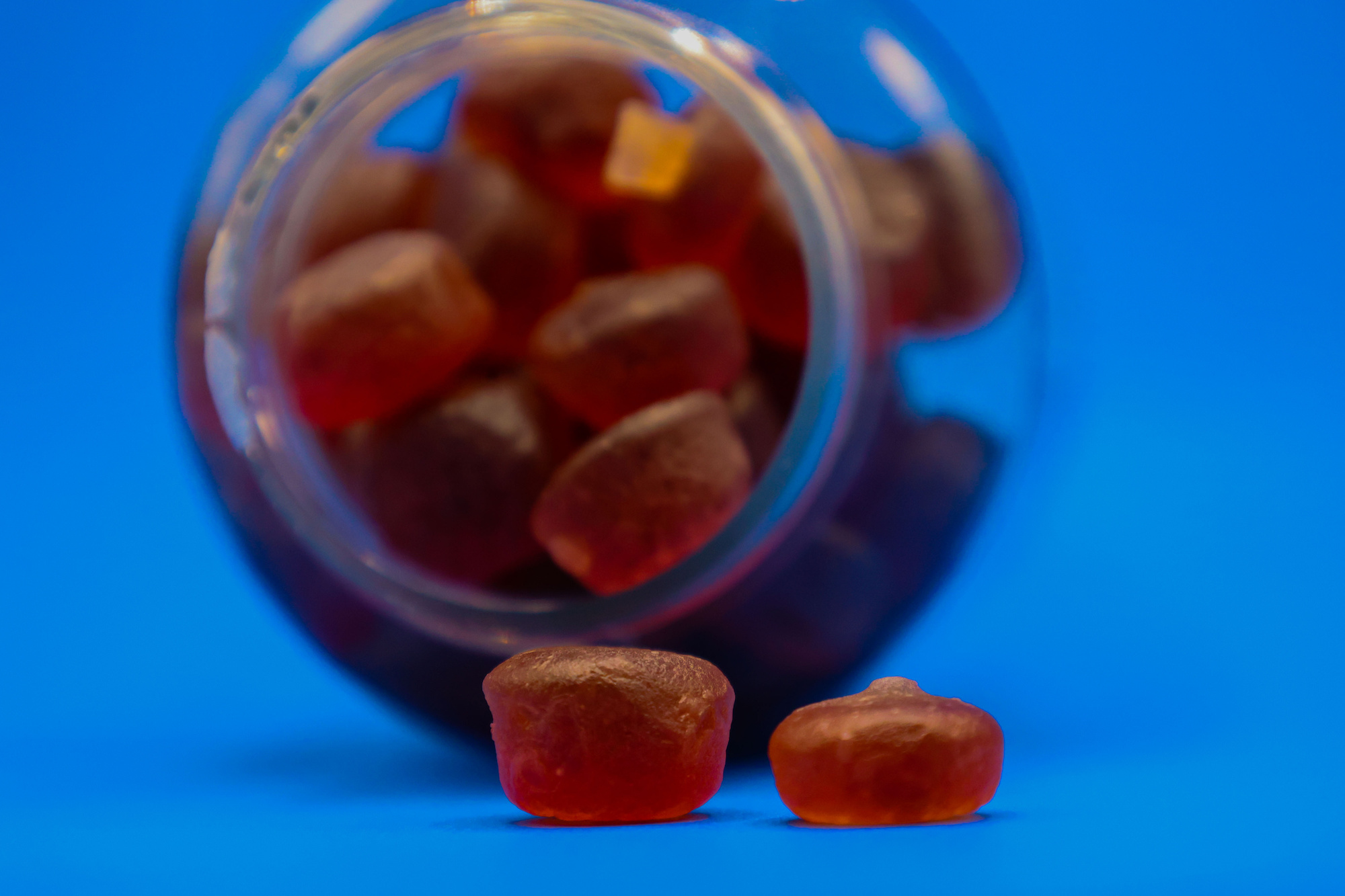
Collagen gummies are becoming extremely popular. But are they really the best solution to healthier hair and nails, pain-free joints, and better skin? In this article, we share the opinion of our award-winning team, consisting of feedback from our Registered Nutritionist, Naturopathic Doctor, Fitness Director, and Program Director. Our opinion on this matter comes from an overarching goal to see our body as a holistic system that thrives on balance. From this lens, we offer you insights you may not have considered, and a fundamental understanding that will afford you the ability to create your own opinions moving forward.
First, let’s clear one thing up right away: there is no debate as to the benefits of collagen. Collagen is the most abundant protein in the human body, found in the bones, muscles, skin, and tendons. It forms a scaffold that provides strength and structure within the body. It is an essential component of connective tissue and plays a crucial role in holding the body’s cells together. It also gives strength and elasticity to the skin. In summary, collagen is very important.
Our Ability to Produce Collagen Decreases With Age
As we age, we produce less and less collagen. This causes our skin to become less elastic and wrinkle, and become thinner. This can happen as early as 25-30, and accelerates in women after menopause. This scary fact is why so many people are turning to supplements, and, lately, gummies.
Rome Was Not Built On Collagen Gummies
Collagen gummies, however, are a supplement, and therein lies a massive clue as to what our relationship with them should be. Supplements, by definition, are not primary sources or fundamental building blocks; they exist just to fill in the cracks. Unfortunately, gummies are marketed as a quick and easy way to restore your collagen levels, and, all too often, taking supplements like these causes us to overlook producing essential vitamins, minerals, and collagen naturally—which is always a much more effective and sustainable way.
Collagen gummies are crack filler, and there’s no way to build anything of significance with just mortar. We must continue to focus on the natural building blocks of our health if we are to live a long, and happy life. And if, and only IF, we cannot genuinely derive or produce enough collagen naturally from our lifestyle (nutrition, exercise, habits), then we can, and should look to supplementation for help.
So what should we be doing to naturally support our collagen levels? And when those efforts don’t quite cut it, are collagen gummies really the best way to increase our collagen levels?
Request Brochure
Our Bodies Naturally Create Collagen
- Spirulina
- Legumes
Seeds: especially pumpkin + chia - Nuts: almonds, hazelnuts, walnuts
- Bone Broth (ideally home made). Pro tip: use bone broth instead of oil to sauté vegetables, or instead of water when making quinoa or brown rice; both great, and sneaky ways, to add protein to your diet.
- Organic, free-to-range eggs
- Organic, pasture-raised meats
- Wild fish
Healthy Lifestyle Factors Support Collagen Creation
- Make sure you consume enough Vitamin C, zinc, and copper, which are cofactors required for collagen cross-linking. Eat your oysters, which are incredible sources of zinc and copper, and consume plenty of red peppers and citrus fruits, which are full of Vitamin C.
- Do not smoke, and limit alcohol consumption. Both are toxic.
- Limit exposure to pollutants. Also toxic.
- Avoid deep-fried foods and processed meats (bacon, hot dogs), as they contain Advanced Glycation End Products (AGE’s), which can cause the stiffening of our collagen.
- Wear your natural sunscreen! UV damage also increases AGE’s and collagen loss.
- Eliminate added sugar. Sugar is collagen’s enemy! Glucose and Fructose (the two most common types of sugar) link amino acids in collagen and elastin and create harmful compounds called advanced glycation end products. These damage collagen and contribute to inflammation.
- Eat regularly throughout the day, rather than all at once, and include some protein with every meal and/or snack. This improves absorption.
- Thoroughly chewing your food. This also helps absorption and reduces stomach acid, which might denature (damage) the proteins before becoming collagen.
- Take a high quality, refrigerated probiotic, or add a fermented food (sauerkraut, kimchi, miso, plain greek yogurt) to your daily routine.
Supplement only when all else fails
In summary, and as is with most aspects of our health, focus on supporting healthy (collagen) levels naturally. Follow our tips for how to do so. If those efforts fall short, look for as clean of a supplement as possible, and remember, it’s only there to fill in the cracks, not build your temple entirely.
What is Mountain Trek?
Mountain Trek is an award-winning health retreat located in the lush forests of British Columbia, Canada. Our award-winning “health reset” program will help you unplug, recharge, and roll back years of stress, anxiety, and unhealthy habits. To learn more about the retreat, and how we can help you reset your health, please email us at info@mountaintrek.com or reach out below:
7 techniques to reduce stress and manage IBS symptoms

Q: I’ve noticed that since Covid, my digestive system has not been performing as well. Is there a relationship between stress and how my intestines work?
A: Studies around the gut-brain connection are increasing, and proving something that we’ve always noticed; that our digestive system talks to our brain, and our brain talks to our stomach, intestines, and other organs. Reflect on the last time you felt butterflies when you are nervous or anxious about an outcome or nauseous over an event, or even had a gut-wrenching experience. All forms of emotions can be located in our body if we pay attention and research is showing that some of the more severe or persistent feelings and thoughts can be reflected in some of our digestive system illnesses. According to Harvard Health Science, emotional and mental stress can be a major contributor to some of the common gastrointestinal illnesses like irritable bowel syndrome, gastro reflux, upset stomach, constipation, and, diarrhea. Unfortunately, these illnesses and the pain and worry associated with them can lead to increased anxiety and depression for many people, and it becomes a negative cycle.
Chronic stress affects your Gut Health & Metabolism
When stress is chronic and not managed, our sympathetic nervous system triggers the release of many hormones including cortisol to help us physically resolve a perceived threat with the options of fight and flight. Cortisol signals some organs and systems to ramp up, and others to turn off. For example, saliva and stomach acid secretions are stopped as digestion is a waste of energy when trying to outrun a mountain lion. The peristaltic contractions that move food through our intestines are also stopped to save energy for fleeing. Heart rate increases and the release of blood sugar becomes more available to power our muscles. Our sympathetic nervous system ramps us up for a survival scenario, and after the event, it’s our parasympathetic nervous system that brings us back into a “rest and digest” equilibrium for balanced health. But, what if there isn’t a cougar to outrun, but instead it’s our thoughts and feelings about situations in our life that keep us in a chronically elevated state of stress? Fast forward to the effect of having a vigilant nervous system triggering too much cortisol on an ongoing basis and the effect on our digestive system can turn into an illness. Add the fact that our parasympathetic nervous system operating from the vagus nerve’s connection to all of our internal organs connects the brain to our guts and is responsible for digestive enzyme release, intestinal contractions, immune reactions to allergens, and hormonal movement back and forth between our head brain and our gut-brain, and we can see how medical and psychological researchers are looking for ways to minimize stress’ effects on the body and brain. On a simplistic level, this communication is responsible for letting us know when our stomach is full before we stretch it with overeating, and on a complex level, it works in concert with our gut microbiome to ensure complete digestion and absorption of nutrients.
7 techniques to reduce stress and manage IBS symptoms
From research reported through the Mayo Clinic, Harvard Medical, and Psychiatry Magazine among others, it is becoming more mainstream to consider the inclusion of psycho-social tools and practices to help reduce stress, anxiety, and depression while improving gut biome, immune function, and stabilizing many digestive disorders. Here are some examples being touted as beneficial to repair the gut-brain issues that have become even more prevalent during the stress of the Covid pandemic.
1. Mindfulness training
Mindfulness is the act of paying attention to the present moment. During mindfulness practice, you are encouraged to notice and accept your thoughts and feelings without trying to change them. Over time, mindfulness helps you reduce stress by improving your ability to accept change and let go of worries. Research indicates that mindfulness can prevent and ease IBS symptoms.7,8
2. Relational Somatic Therapy
Connecting body sensations with feelings and implicit memories to heal developmental, attachment, and trauma from childhood in order to learn how to self and co-regulate the sympathetic nervous system in order to increase one’s tolerance to previously stressful triggers.
3. Cognitive behavioral therapy
Sessions with a trained counselor can help you learn to modify or change your responses to stress. Several studies suggest that cognitive-behavioral therapy provides a significant and long-lasting reduction of IBS symptoms.1,6-8
4. Hypnotherapy
During sessions with a trained professional, you enter a relaxed state and are then guided through visualizations and suggestions designed to help you control your symptoms and calm your digestive tract. Several studies support the long-term effectiveness of hypnosis for IBS.1,6-8
5. Biofeedback
During these sessions, electrical sensors help you receive information (feedback) on your body’s functions – heart rate, for example. The feedback helps you focus on making changes to manage stress and ease symptoms.7,8
6. Progressive relaxation training
These exercises help you learn how to relax your muscles. For example, you might start by tightening the muscles in your feet, then slowly releasing that tension. Next, tighten and relax your calves. Continue up the body until all your muscles – including those in your face and head – are relaxed. This progressive tightening and relaxing of your muscles are typically coupled with breathing techniques – breathe in while tightening the muscle group, breathe out when relaxing the muscles.1,6,7
7. Yoga
In a review of several studies, individuals with IBS who practice yoga experience fewer bowel symptoms, decreased IBS severity, and lower rates of anxiety compared with conventional treatment.9
What is Mountain Trek?
Mountain Trek is the health reset you’ve been looking for. Our award-winning hiking-based health program, immersed in the lush nature of British Columbia, will help you unplug, recharge, and roll back years of stress, anxiety, and unhealthy habits. To learn more about the retreat, and how we can help you reset your health, please email us at info@mountaintrek.com or reach out below:
Are powdered greens good for you?
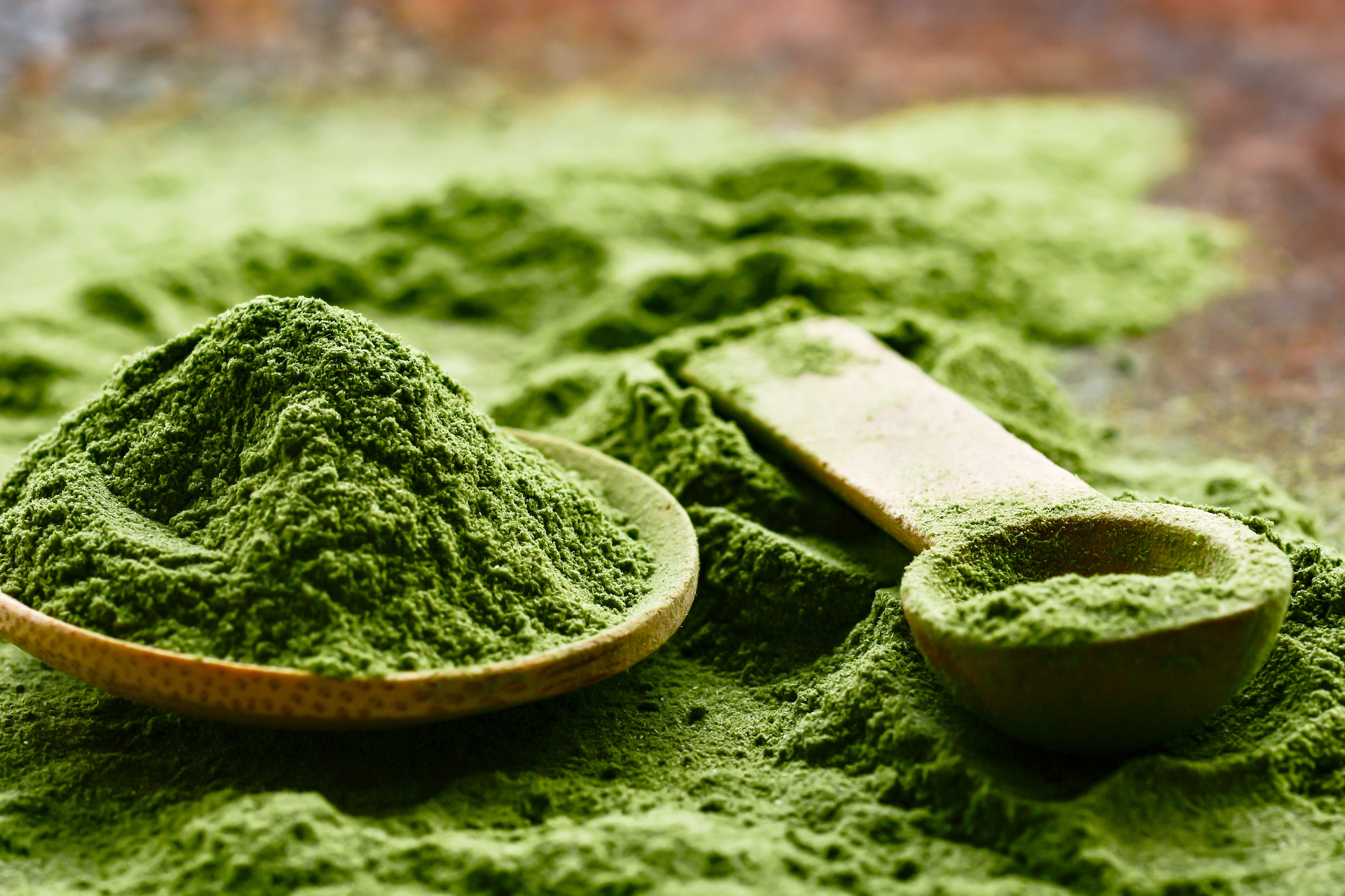
Q: I find that with juggling all my family responsibilities, long work hours, and fast-paced life (whether working from home or when I was traveling before Covid), that I’m not getting enough plant food in my diet. Other than a salad for dinner, I think I may be short-changing the minerals and vitamins I need. I’ve seen a surge of “powdered greens” products being marketed these days. What do you think about their benefits? Are powdered greens good for you?
A: It is very understandable that time and energy to include more (appetizing and filling) plants in our diet can seem daunting. Other than including a piece of fruit for a snack, it can feel like adding vegetables to our meals means complicating preparation and adding cook time. Consequently, if at all, we include our vegetables in our largest meal of the day… dinner.
This imbalance is where powered greens as vegetable supplements can have their place. However, let us not forget to be discerning before submitting to manufactured products designed and marketed to make our go-go life maintain its go-go-ness at all costs! From our perspective on balanced health (which includes nutrition, movement, sleep hygiene, detoxification, and mental/emotional and spiritual well-being) the branch of nutrition is primarily focused on “nutrifying” (absorbing ample nutrients), fueling, and reducing inflammation in the body and brain. If we are not averaging approximately 66-75% of our food intake from the plant kingdom, we are likely not getting enough of the nutrients required for a healthy body and brain. Phytochemicals, minerals, most vitamins, antioxidants, omega 3 oils, many amino acids (building blocks of protein), and fiber all come from the kingdom of plants. The color green is only one color from the full spectrum of phytonutrients required for balanced nutrition, with every other color provides different building blocks.
Another consideration is the potency and absorbency of the powdered greens you take. From our experience, whole, unprocessed, fresh, local, and organic are important considerations when prioritizing which form we get our vegetables from. Perhaps you are breaking your fast within 30 minutes of rising and for ease and convenience, a smoothie is all you think you have time for. Adding powdered greens to your smoothie will contribute more micronutrients than your typical banana and blueberry inclusion.
Greens powders typically have a green hue and can taste a bit grassy (so adding them to a smoothie makes them more palatable). The produce used in these supplements is generally dried and then ground into powder. Alternatively, some ingredients may be juiced, then dehydrated, or certain components of the whole food may be extracted and dried. There are also sprouted and fermented greens powders, which can provide an easier-to-digest, more absorbable option. Ensure the product label does not include artificial colors, added sweeteners, and is ideally manufactured from organically sourced vegetables in order to minimize pesticides and fungicides.
So, if we are aiming to add more plant-based nutrients across our day, and dinner is covered by a variety of raw salad ingredients, some roasted, steamed, or stir-fried veggies, and breakfast is augmented with some frozen or fresh fruit and a high-quality greens powder supplement in a smoothie, what can we do that’s healthful and easy across the workday? Remember, besides nutrifying the cells of our body and brain, we need to provide ongoing fuel for optimal brain function and energy management. Otherwise, the dreaded 2 o’clock crash hits us hard and we turn to a comforting cup of caffeine-laced coffee. But at least a 1/3 of that caffeine is going to still be coursing its way around your body by the time your head hits the pillow. Not ideal. There’s a better way: eating every 2-3 hours keeps our brain fueled for optimum mental clarity and decision-making potency. Enliven your lunch sandwich or salad with radish, endive, pumpkin, pea, or sunflower “microgreen sprouts”. A sprouted seed has many times more available minerals and vitamins than a full-grown plant and has a variety of fresh flavors to enrich your mid-day meal. A morning snack can be as simple, nutrifying, and blood-sugar-balancing as a piece of seasonally fresh fruit accompanied by a couple of tablespoons of protein-dense nuts and or seeds. And to counter the mid-afternoon energy drop we feel as cortisol wanes, consider having some pre-washed and cut veggie sticks on hand to dip into a delicious protein-based dip-like hummus, or our Golden Almond Butter Dip. Mixing our various veggie snacks with protein gives a more sustaining energy release and avoids blood sugar and insulin spikes.
In summary, utilizing quality green powders to augment rather than replace fresh, unprocessed, and potentially organic fruits and vegetables can support the cellular requirements of plant-kingdom building blocks. As an enticement to eat more varieties of vegetables, remember savoring their textures and flavors will be easier when we chew them rather than gulp them.
Learn more about Mountain Trek’s Nutrition Principles.
What is Mountain Trek?
Mountain Trek is the health reset you’ve been looking for. Our award-winning hiking-based health program, immersed in the lush nature of British Columbia, will help you unplug, recharge, and roll back years of stress, anxiety, and unhealthy habits. To learn more about the retreat, and how we can help you reset your health, please email us at info@mountaintrek.com or reach out below:
The Cause of your low energy and how to fix it

Feeling tired and low on energy has a dramatic effect on your life. Being low on energy reduces productivity, happiness, longevity, and your overall health. Understanding what causes a lack of energy and how to fix it is critical, and what we aim to share with you in this article.
What Causes Low Energy
Essentially all life in the universe is composed of energy. And, energy (which is never created or destroyed) is constantly changing into one form and through utilization or decay into another. In the cells of our human body, we take in thermo-electric energy from our sun that has been converted into plant life (and up the food chain into animal life) in the form of glucose (sugar). Tiny organelles in each of our cells called mitochondria convert the sugar transported by blood (“blood sugar”) into energy to power every organ, muscle, and neuron. These 1000-2500 power houses extract energy from food and supply it to all parts of every cell in an energy currency called ATP. The healthier and more efficient our mitochondria are, the healthier and more efficient our bodies are.
How To Fix Low Energy
Now if energy is never created or destroyed, how come we feel like we are losing energy? Aging and our lifestyle choices affect the efficiency and longevity of our mitochondria. Oxidation (the bombardment of mitochondria and other cell components with “free radical” electrons from energy production), nutrient deficiencies, and environmental toxins are the root causes. According to Integrative Medicine: A Clinician’s Journal, “the better a species does at protecting its mitochondria, the longer a species lives”. So, in a nutshell, we need to ensure our lifestyle supports our mitochondria operating efficiently.
Optimize Your Nutrition and Meal Timing
The primary way mitochondria are protected from ‘oxidative stress’ is through plant-based dietary building blocks containing CoQ10, manganese, glutathione, and vitamin E from omega 3 oils. Then there is the need for rest. Intermittent Fasting for as close as possible to 12 hrs through the night, gives the mitochondria a break from energy production so they can repair and regenerate.
Reduce Toxin Exposure
Decreasing toxin exposure (plastics, petrochemicals, heavy metals, alcohol, etc.) lessons damage.
Build Muscle Mass
And, building muscle mass counters the diminishing number of mitochondria as we age. Harvard Vanguard Medical Associates warn us about sedentarism contributing to a loss of muscle mass prematurely lowering our number of mitochondria and ATP production. Strength training rebuilds energy-producing mitochondria in our muscle cells.
Reduce Stress Hormone Cortisol
Stress reduction is important to lowering cortisol which through both the increase of inflammation and reduction of ATP production becomes another energy zapper.
Prioritize Sleep
It’s one thing to target longevity through incorporating as many balanced health lifestyle habits as possible (refer to the previous blog on Blue Zone Centenarian lifestyle commonalities), but living consciously now with a focus on supporting our cellular energy engines and maintaining a charged battery with deep sleep will keep you feeling youthful until your ‘due date’.
What is Mountain Trek?
Mountain Trek is the health reset you’ve been looking for. Our award-winning hiking-based health program, immersed in the lush nature of British Columbia, will help you unplug, recharge, and roll back years of stress, anxiety, and unhealthy habits. To learn more about the retreat, and how we can help you reset your health, please email us at info@mountaintrek.com or reach out below:
How Chronic Inflammation Causes Metabolic Disease, Dementia, and Cancer
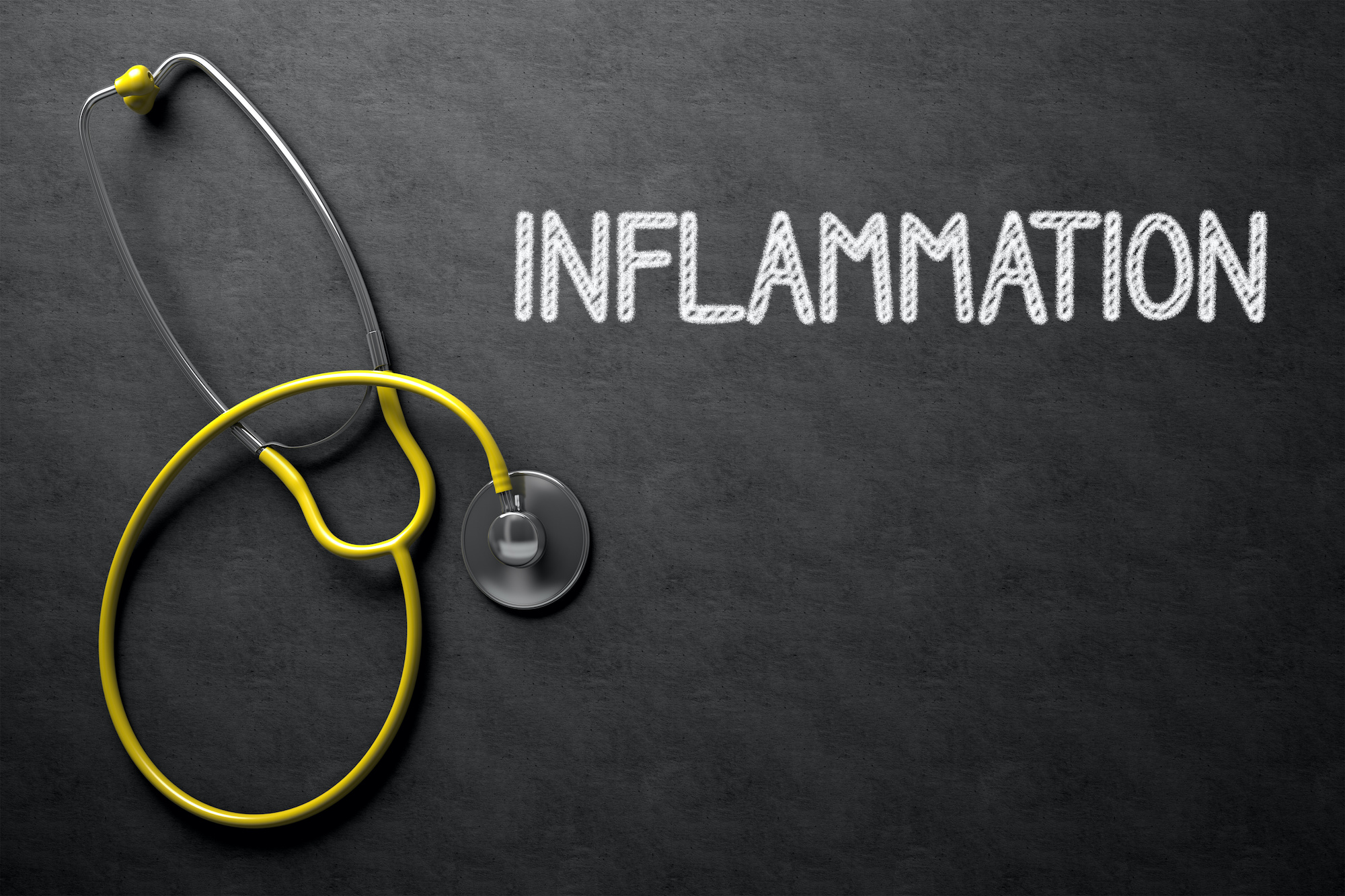
According to the Mayo Clinic, 90% of the illnesses they deal with are caused by lifestyle, while only 10% are congenital. These are illnesses we have all come to accept as just a part of life, aging, and luck; demential, diabetes, and cancer to name a few. But now, more than ever, we are realizing that there is something familiar, yet very misunderstood at root of those lifestyle illnesses: inflammation. Specifically, chronic inflammation.
Acute Vs. Chronic Inflammation
Acute inflammation is the body’s immune and repair response to an injury or a harmful substance or invader entering our body. Low-grade chronic inflammation is the result of an imbalance in our immune function due to ongoing stress or lifestyle choices that keep our immune system working overtime. Research is showing us that balanced health measures that prioritize regular movement (through a variety of exercises), an anti-inflammatory fiber-rich diet, deep regular 7-9 hr sleep, and stress-reducing activities like meditation coupled with trauma resolution therapy, counter chronic inflammation and reduce the likelihood of contracting these and other diseases.
Chronic Inflammation and Metabolic Syndrome
Metabolic Syndrome is a combination of conditions that increase the risk of heart disease, type 2 diabetes, stroke (and its contribution to dementia), and cancer. These conditions include abdominal obesity, high blood pressure, impaired glucose tolerance, abnormal negative cholesterol levels, and chronic inflammation from an overactive immune system. Metabolic syndrome, obesity (over 30% body fat), and type 2 diabetes (insulin resistance) are interconnected. All 3 are linked by genetic markers, overeating an unhealthy diet, and lack of consistent movement/exercise… as well as a chronic state of inflammation in the body. Most of us think that fat cells are inert storage containers, however, newer research has shown that belly fat is metabolically active and produces pro-inflammatory substances that contribute to insulin resistance. It’s confusing, but chronic low-grade inflammation has been identified as both a cause and consequence of metabolic syndrome!
Chronic Inflammation and Cancer
When infections, autoimmune responses, or conditions such as obesity go unchecked the ensuing inflammation can promote the growth and replication of cancer cells. Type 2 diabetes (from insulin resistance) is associated with a higher risk of liver, pancreas, ovary, lung, bladder, and breast cancers. According to Harvard Health reports, chronic inflammation and high blood sugar levels also contribute to the general development of cancer cells through the damage to cellular DNA and the creation of an environment hospitable to cancer growth. An estimated 1 in 5 cancer cases stem from a combination of excess fat stores, inactivity, poor nutrition, excess alcohol use, and unresolved stressors.
Chronic Inflammation and Dementia
Dementia including Alzheimer’s, like heart disease, has its root cause in plaque build up in arteries and between neurons. Research still isn’t clear about what is behind these protein deposits, but what we know is the protein plaque deposits in brain tissue and cardiac arteries initiate an immune response. Microglia and white blood cells will attempt to eradicate the plaque, but it isn’t as easy to destroy as viruses or harmful bacteria. Cytokines and other inflammatory chemicals are released in a long-held effort which amps up the immune system creating more chronic inflammation. Research is also seeing how chronic inflammatory diseases like rheumatoid arthritis, inflammatory bowel disease, atherosclerotic heart disease, and diabetes have been linked to an increased risk for depression! Recent findings suggest inflammation may increase depression risk by suppressing the birth of new brain cells (neurogenesis).
Though there are many ongoing experiments and tests utilizing medications like anti-inflammatories to help turn off an over-functioning immune system and lower chronic inflammation, the safest and most effective approach is to focus on lifestyle interventions like diet, exercise, stress reduction, sleep depth, and detoxification.
What is Mountain Trek?
Mountain Trek is the health reset you’ve been looking for. Our award-winning hiking-based health program, immersed in the lush nature of British Columbia, will help you unplug, recharge, and roll back years of stress, anxiety, and unhealthy habits. To learn more about the retreat, and how we can help you reset your health, please email us at info@mountaintrek.com or reach out below:
Food Sensitivities and Elimination Diets

We all inhabit different bodies. With that comes an almost infinite variety of genetic variations, four different blood types, and unique reactions to our inner and outer environments. Some of us have allergies to pollen, bee venom, nuts, or shellfish. Some of us get runny noses in the spring and some of us have itchy skin when we wear wool. Just as there are no two fingerprints the same in all of humanity, there is no digestive or immune system alike.
When our body finds a certain food difficult to digest, it can be like a stressor to our internal organs. If we eat too much of a particular food or eat it too often, it can not only inflame our intestinal tract but can also invoke our immune system to counteract the food particle’s effects once it passes into our bloodstream. This adds even more stress on many of our systems. Our stress hormone cortisol will rise, our mucous membranes may become inflamed, and our energy levels will drop as our body fights to eliminate the unwanted particles. A variety of symptoms ranging from those that are barely noticeable to some that are chronically depleting are unique to each of us. To add to this complexity, if we’ve been consuming certain foods over a lifetime, we may not be mindful that our body finds certain items distressing as we have desensitized ourselves to the symptoms or the energy drain.
Determining whether any particular food stresses our bodies can seem daunting. But if we take the approach of being an investigator, and bring mindful curiosity and a willingness to experiment with our nutrition, it is possible to become free of the internal stress and regain health and vitality. There are three basic categories of digestive and immune difficulties when it comes to eating.
Food Allergies
Food allergies are typically an acute immune response to proteins in certain foods that our body isn’t designed to digest and assimilate. Common allergies are shellfish, peanuts and tree nuts. The reaction is often so strong that it can be life threatening.
Food Intolerances
Food intolerances are non-immune based responses to difficulty digesting certain foods. These substances may be certain sugars or proteins which we are not genetically able to produce the digestive components to down and assimilate them. This inability can lead to digestive inflammation. An example could be lactose a sugar found in dairy foods not being able to be broken down by people who stop producing lactase after the age of 2.
Food Sensitivities
Food sensitivities are again unique to each of us and could be to certain chemical compounds that are found naturally in certain foods like alkaloids in the ‘nightshade’ family, or histamines in fermented food and beverages, dried fruits and avocados, or salicylates found in some foods and medications such as aspirin. We can also be highly sensitive to certain chemical compounds found in our food such as pesticides (like glyphosate), and food additives. These foods or substances cause a delayed immune reaction that may not peak symptomatically for 3 days after ingestion, making it difficult to pin point the stress causing culprit.
Common symptoms of food sensitivities and intolerances
- Bloating in our lower belly after eating including gas and or water retention in the bowels.
- Irregular bowel movements or stool consistency.
- Water retention throughout the body.
- Joint pain.
- Sniffling, runny nose, postnasal drip, or sneezing.
- Itchy skin or skin eruptions like eczema, or acne.
- Brain fog, headaches, low energy, mood shifts.
- Asthma or other respiratory difficulties.
- Poor depth of sleep.
- Low functioning immune system leading frequent bouts of cold and flu.
- Cravings for carb, fat, and salt snacks to offset the increased levels of cortisol from internal stress on our digestive and immune system.
Health professionals like a Naturopathic Dr., or Allopathic Dr. (MD) can help determine whether we are reacting to an allergy, intolerance or sensitivity. They may employ blood work, or a skin prick sampling of a specific food or chemical to look for immune or inflammation measures. At Mountain Trek, we prefer utilizing an “Elimination Diet”, in conjunction with a Naturopathic Dr., where you strategically remove suspected foods and chemicals for 14-30 days. Important to this effort is mindfully self monitoring and journalling to track physical, mental, emotional and energetic reactions when carefully and strategically adding items back into our diet. It is worth the experiment to reclaim our balanced health and energy!
Learn more about symptoms and elimination diets from Mountain Trek’s Naturopathic Doctor, Dr. Kimberley.
What is Mountain Trek?
Mountain Trek is the health reset you’ve been looking for. Our award-winning hiking-based health program, immersed in the lush nature of British Columbia, will help you unplug, recharge, and roll back years of stress, anxiety, and unhealthy habits. To learn more about the retreat, and how we can help you reset your health, please email us at info@mountaintrek.com or reach out below:
Q&A: Why is sugar bad?
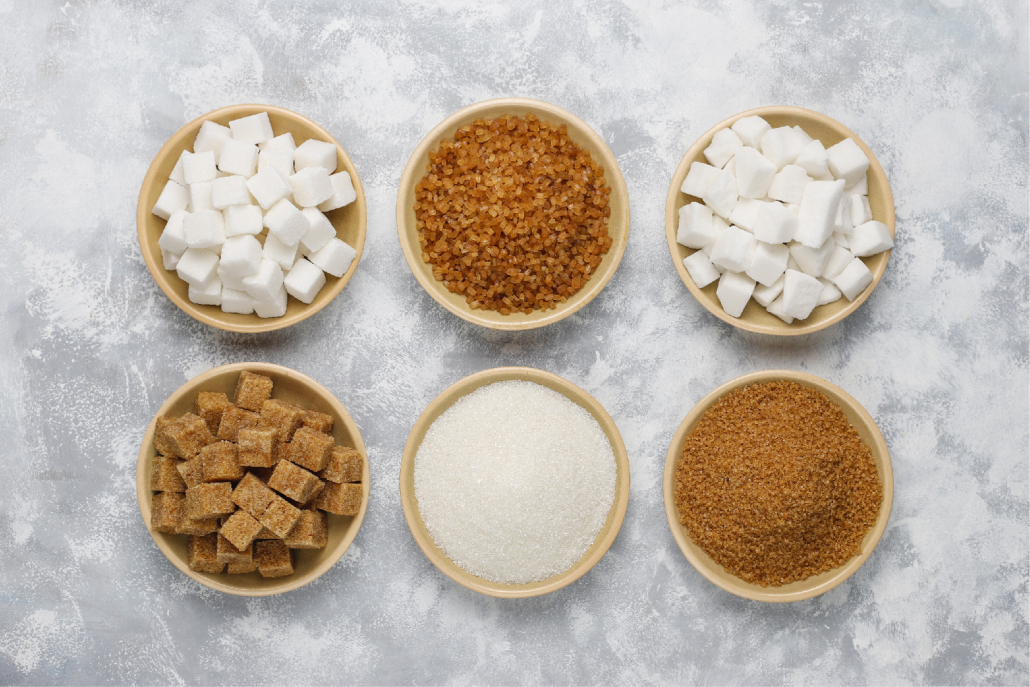
Q: Why is sugar so bad for us, and why is it so hard to avoid?
A: First, let’s redefine “bad”. Sugar, or glucose, is not “bad” for us—in fact, it is an essential form of energy for the cells of our brain and body. Our tongue even has a specific taste bud allocated to finding it for our survival. The problem with sugar is when it’s added in addition to naturally occurring sugars. This “added-sugar” is so prevalent in our manufactured food that we are taking in way too much, way too often. Let’s shed some light on “too much”; in the year 1700, the average amount of sugar intake, including natural sugars, was approximately 4lbs per person annually. That like two nalgenes full of sugar. In the year 1800, sugar cane plantations made it more available than just to the wealthy, and the average increased to 18lbs. By 1900 it was around 40lbs per person per year. Today? Depending on the study you read, the American consumes between 60 and 150lbs per adult annually! That’s like a wheelbarrow full of sugar…
This number is so high because sugar is now added to everything. The American Heart Association has put out a recommendation to limit added-sugar to no more than 9 teaspoons (150 calories) of added-sugar per day for men, and 6 teaspoons (25 grams or 100 calories) for women. That gets immediately allocated with just one 12oz can of soda. Forget the fat-free salad dressing or ketchep for our french fries or vanilla yogurt that all have equal amounts of sugar. Today, almost everything that has been prepared for us has sugar added to enhance flavor or shelf-life.
To be fair, a vast amount of our food contains natural sugars. The obvious is fruit. The less obvious, however—starchy “simple carbs” like pasta, white rice, bread, crackers, and so on. The starch in these carbohydrates is a carbon chain of sugar molecules that is broken down into blood sugar by the amalayse in our saliva. By the time these foods are broken down they aren’t much different than table sugar.
But there’s a massive difference between whole natural sources of sugar like fruit or fiber covered carbohydrates like whole grains and the sugar added to soda. These natural sources of sugar come with an added benefit of fiber, which helps us avoid the ‘sugar bomb’ by slowing down the digestion of sugar, which avoids a blood sugar spike and the consequential insulin spike which leads to insulin resistance the main cause of type 2 diabetes. So, this leaves us with added-sugar and simple carbs as leading causes why Harvard labeled sugar as one of the greatest threats to our cardiovascular health.
Some other negative health symptoms from eating too much sugar or simple carbs are:
– Premature aging as sugar can damage skin proteins, collagen, and elastin leading to premature wrinkles.
– Increased inflammation, weakened immune and hormonal imbalance as undesirable gut bacteria and yeasts that live off sugar out-compete our fiber eating positive flora communities.
– Constant cravings are a part of the dopamine reward system that our brain has been wired for survival. The Food industry capitalizes on the addictive quality of sugar in processed food.
– Inconsistent energy levels as our pancreas manages the sugar bomb with insulin and we experience an energy spike followed by a drop and crash.
– Bloating from sugar bugs off-gassing and of course belly fat
– Diseases like Heart and Cardiovascular disease, Fatty Liver, and Diabetes
To avoid excess sugar intake, avoid the top processed food sources; soda, energy drinks, sports drinks and fruit juices, grain- and dairy-based desserts. But be aware that even ketchup has as much added sugar per gram as a soda!
To add to the fact that sugar is now present in nearly everything we eat, it also elicits a dopamine response when consumed. Dopamine is a feel-good hormone, so we can actually get addicted to sugar because of the chemical response it causes. To work with dopamine-driven sugar cravings, employ mindfulness moments to ask the following questions before reaching into the fridge:
- “Is this really what I need right now (or is it a want)?
- what am I feeling?
- what am I thinking?
- what do I really need right now (if I feel, exhausted, bored, overworked, lonely, sad, etc)? Perhaps a glass of water or a crisp apple and a few nuts could meet my hunger and energy needs while connecting with a close friend could help on the emotional side.
We hope this article helps you curb your sugar intake!
What is Mountain Trek?
Mountain Trek is the health reset you’ve been looking for. Our award-winning hiking-based health retreat, immersed in the lush nature of British Columbia, will help you unplug, recharge, and roll back years of stress, anxiety, and unhealthy habits. To learn more about the retreat, and how we can help you reset your health, please email us at info@mountaintrek.com or reach out below:



